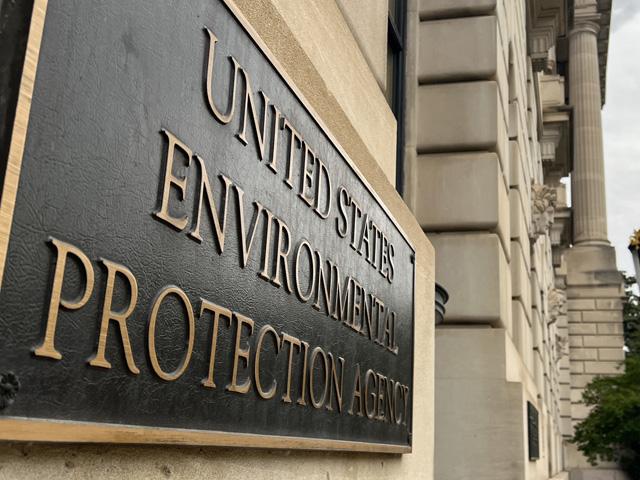EPA Proposes New Atrazine Restrictions
Biden Administration Proposes Atrazine Label Restrictions for Farmers
LINCOLN, Neb. (DTN) -- The EPA is proposing several label changes to atrazine products, designed to reduce runoff of the herbicide from farm fields.
The agency released a proposal for public comment on Thursday that would place new restrictions on atrazine use to protect aquatic plant species.
In December 2021, the U.S. Court of Appeals for the Ninth Circuit in San Francisco granted EPA's request to re-examine atrazine's label following a Biden administration executive order.
Atrazine is a herbicide widely used in agriculture across a range of crops, primarily corn but also sugarcane and sorghum, as well as a smaller amount in landscape care.
Environmental groups have lobbied for atrazine to be banned entirely, based on concerns about human health risks and environmental problems, particularly concerning water quality. Syngenta is the registrant and primary manufacturer of atrazine.
EPA proposes the following measures for all atrazine labels:
-- To prohibit application when soils are saturated or above field capacity (i.e., the soil's ability to retain water).
-- To prohibit application during rain or when a storm event, likely to produce runoff from the treated area, is forecast to occur within 48 hours following application.
-- Prohibit aerial applications of all formulations.
-- To restrict annual application rates to 2 pounds of active ingredient or less per acre per year or less for applications to sorghum, field corn and sweet corn.
P[L1] D[0x0] M[300x250] OOP[F] ADUNIT[] T[]
According to a news release from EPA, the agency also is proposing to add a "picklist" to labels that would require growers to select a combination of application-rate reductions and/or runoff control measures when using atrazine in watersheds with atrazine concentrations that exceed a certain threshold.
"The number of runoff control practices from the picklist that a grower would be required to implement depends on the estimated atrazine concentration in the watershed where the field is located and that watershed's vulnerability to atrazine runoff, as well as the grower's selected application rate," the agency said in a news release.
"The higher the application rate and the higher the estimated atrazine concentration in the watershed, the greater the number of mitigation practices that may be necessary."
The EPA would not require picklist requirements for fields in watersheds where "predicted atrazine concentrations below 3.4 (micrograms per liter)," or about 82% of all U.S. watersheds.
However, EPA said fields located in watersheds with predicted atrazine concentrations between 3.4 and 9.8 -- or about 8% of watersheds -- would "generally" be required to choose one to four picklist requirements. That would depend on several factors, including application rates, crop, region and soil erodibility, according to the agency.
Watersheds with predicted atrazine concentrations above 9.8, according to EPA's proposal, would have "the highest level of required picklist mitigations" to select.
"The picklist approach provides growers with the flexibility to select the runoff control practices that would be least burdensome to adopt," EPA said in a news release.
The agency's proposal was met with resistance from the National Corn Growers Association.
"We are disappointed by EPA's decision," Iowa farmer and NCGA President Chris Edgington said in a statement. "We can feed and fuel the world and fight climate change, but we can't do these things without modern farming tools, and atrazine is a tool that is critical to our work."
NCGA said in a statement the labeling requirements will "impose arduous new restrictions and mitigation measures on the herbicide," limiting how much of the product farmers use.
"The latest development marks a step backward in EPA's commitment to transparency and the use of the best available science," Edgington said.
However, he said EPA listened to growers' requests and agreed to additional scientific review.
In October 2020, EPA received a petition alleging the agency violated its duties under the Federal Insecticide, Fungicide, and Rodenticide Act, or FIFRA, by issuing the atrazine ID without "substantial evidence" supporting the decision.
The agency said in the news release it will seek external peer review as to the alleged risks presented by atrazine to aquatic plant species.
The public comment period has been launched for 60 days, under the docket identification number EPA-HQ-OPP-2013-0266 at www.regulations.gov.
Read more on DTN:
"Biden Reviewing EPA Atrazine Actions," https://www.dtnpf.com/…
"Glyphosate, Atrazine Evaluations Released," https://www.dtnpf.com/…
Todd Neeley can be reached at todd.neeley@dtn.com
Follow him on Twitter @DTNeeley
(c) Copyright 2022 DTN, LLC. All rights reserved.






